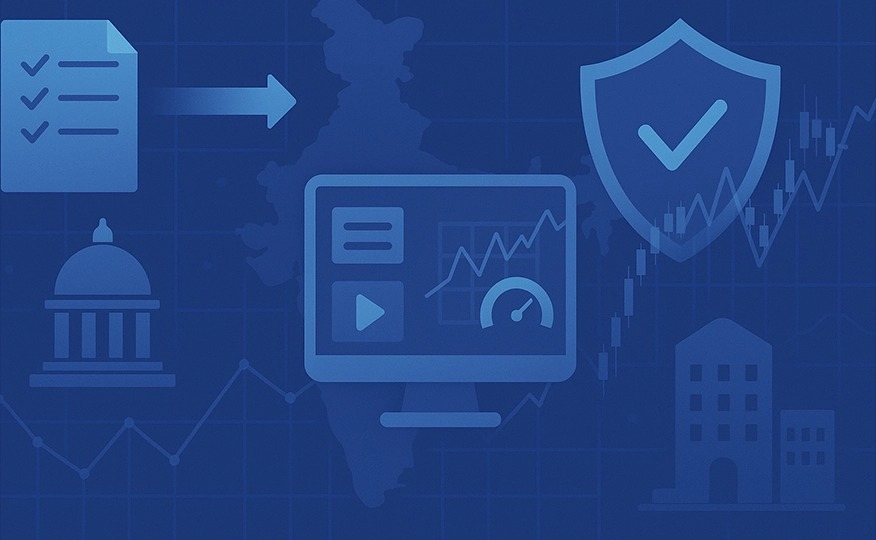
In today’s rapidly evolving digital landscape, cybersecurity has become a cornerstone of organizational resilience. Financial institutions, in particular, face heightened scrutiny as cyber threats grow in sophistication and frequency.
The Securities and Exchange Board of India (SEBI) has taken significant steps to strengthen cybersecurity across the financial ecosystem with the introduction of the SEBI CSCRF, the Cybersecurity and Cyber Resilience Framework.
This initiative aims to create a standardized and proactive approach toward protecting regulated entities from data breaches, ransomware, and other cyber risks.
While the framework outlines clear expectations, its real-world implementation has proven challenging for many organizations. Understanding these challenges and adopting strategic measures to address them is key to successful compliance and long-term resilience.
Understanding the Purpose of SEBI CSCRF

The SEBI CSCRF was developed to ensure that stockbrokers, mutual funds, depositories, and other market intermediaries maintain a robust cybersecurity posture.
It mandates the establishment of governance structures, periodic audits, risk assessments, and incident response mechanisms. The ultimate goal is to safeguard investor data and maintain trust in India’s financial markets.
However, many regulated entities underestimate the operational and technical complexities of this framework. Implementing CSCRF goes beyond meeting a checklist, it requires a cultural shift toward continuous security awareness and adaptability.
Challenge 1: Inadequate Cyber Governance Structures
One of the first hurdles organizations face is building a governance model that aligns with the framework.
Many institutions lack a dedicated cybersecurity committee or clear accountability across departments. Without defined roles and responsibilities, incident response and policy enforcement often remain reactive rather than proactive.
How to Overcome It:
Establish a cross-functional cybersecurity committee responsible for risk oversight and compliance monitoring.
This committee should include representatives from IT, operations, risk management, and compliance teams. Regular reviews of security policies and threat intelligence updates will ensure alignment with the CSCRF objectives.
Challenge 2: Limited Skilled Workforce

Cybersecurity expertise is in short supply globally, and financial institutions are no exception. Smaller intermediaries often struggle to hire or retain qualified professionals capable of managing evolving threats and ensuring compliance with SEBI’s requirements.
How to Overcome It:
Invest in regular training and certification programs for existing staff. Partnering with managed security service providers can help bridge skill gaps. Automation tools can also assist in monitoring, reporting, and vulnerability management, reducing dependence on manual interventions.
Challenge 3: Gaps in Incident Response and Recovery Plans
Many organizations have incident response plans on paper but lack practical readiness. Delayed reporting, poor coordination, or unclear escalation procedures can turn minor security incidents into significant breaches.
How to Overcome It:
Develop a detailed incident response plan that defines specific steps for detection, containment, eradication, and recovery. Conduct regular mock drills and tabletop exercises to test the plan’s effectiveness. A well-prepared team can minimize damage and recover operations quickly.
Challenge 4: Inconsistent Risk Assessments
The SEBI CSCRF emphasizes periodic risk assessments to identify vulnerabilities. However, many entities treat risk assessment as a one-time activity rather than an ongoing process. This results in outdated insights and unaddressed vulnerabilities.
How to Overcome It:
Adopt a continuous risk assessment approach using automated vulnerability scanning tools. Regularly update threat models to reflect new technologies, vendor dependencies, and external risks. Align assessment findings with strategic decisions to ensure that mitigation measures are timely and effective.
Challenge 5: Weak Third-Party Risk Management

Financial institutions often rely on multiple vendors for operations, data storage, and IT infrastructure. Each vendor represents a potential entry point for attackers if not adequately managed. Weak oversight of third-party relationships can lead to compliance violations.
How to Overcome It:
Establish a vendor risk management policy that includes security due diligence, contract clauses on data protection, and periodic audits. Vendors should be required to follow security standards that align with SEBI’s guidelines. Maintaining transparency and continuous monitoring of third-party activities can significantly reduce external risks.
Challenge 6: Lack of Comprehensive Data Classification
Data classification plays a crucial role in determining what needs to be protected and to what extent. Many entities overlook this step, leading to inconsistent data handling practices and higher chances of data leakage.
How to Overcome It:
Create a data classification framework that categorizes information based on sensitivity, such as public, internal, confidential, and restricted. Apply access controls and encryption accordingly. This ensures that sensitive data receives the highest level of protection under the CSCRF mandate.
Challenge 7: Technology Silos and Legacy Systems
Older systems often lack compatibility with modern cybersecurity solutions. Maintaining these legacy platforms without necessary security upgrades can expose institutions to unnecessary risks.
How to Overcome It:
Develop a phased modernization strategy that prioritizes systems most exposed to external access. Introduce security orchestration tools that can unify monitoring across both legacy and new platforms. Transitioning gradually allows for continuous protection without disrupting business operations.
Challenge 8: Insufficient Audit and Monitoring Mechanisms

Without effective monitoring, detecting suspicious activity becomes nearly impossible. Many organizations rely on periodic manual audits rather than continuous surveillance, which leads to delayed detection of breaches.
How to Overcome It:
Implement Security Information and Event Management (SIEM) systems to enable real-time monitoring and alerting. Regular internal audits supported by automated tools can verify compliance with the SEBI CSCRF framework and highlight gaps before they become critical.
Challenge 9: Poor Coordination Between Departments
Compliance with CSCRF requires collaboration between technology, compliance, and management teams. When communication channels are weak, security efforts remain fragmented, reducing overall effectiveness.
How to Overcome It:
Encourage inter-departmental collaboration through regular meetings and joint accountability measures.
Cybersecurity must be seen as a business enabler rather than a technical hurdle. When departments share ownership of security outcomes, implementation becomes smoother and more sustainable.
Challenge 10: Underestimating Continuous Improvement
Compliance is not a one-time milestone. Many entities stop updating their controls once they meet the basic requirements, overlooking evolving threats and emerging technologies.
How to Overcome It:
Adopt a mindset of continuous improvement. Schedule periodic reviews of policies, security tools, and governance structures. Stay updated with SEBI’s circulars and updates to ensure ongoing compliance.
Moving Toward Resilience

Successful implementation of the SEBI CSCRF requires more than adherence to documentation, it demands a culture of security awareness, collaboration, and adaptability.
The organizations that view the framework as a roadmap to resilience rather than a regulatory burden will emerge stronger in the long run.
Conclusion
The path to CSCRF compliance may seem demanding, but it offers invaluable benefits in protecting data, maintaining investor confidence, and ensuring operational stability.
Overcoming these challenges begins with understanding your current security posture and taking proactive steps to align with the framework’s requirements.
For financial institutions seeking expert support in achieving robust cybersecurity resilience, doverunner offers advanced solutions tailored to meet regulatory and operational needs.
Its comprehensive protection tools enhance threat detection, enable continuous monitoring, and help organizations maintain compliance seamlessly.
To explore how your business can strengthen cyber resilience under SEBI’s framework, visit DoveRunner’s website or schedule a consultation today.








